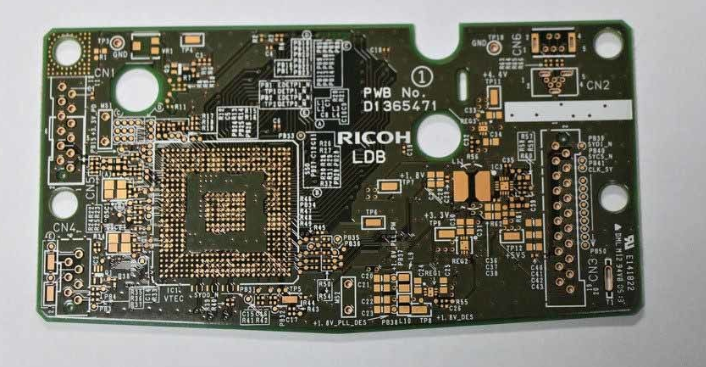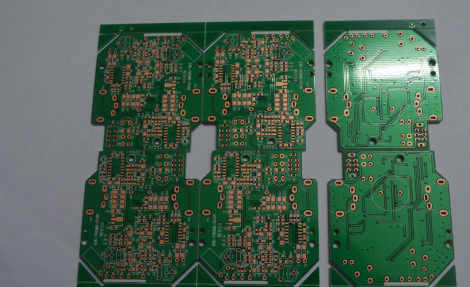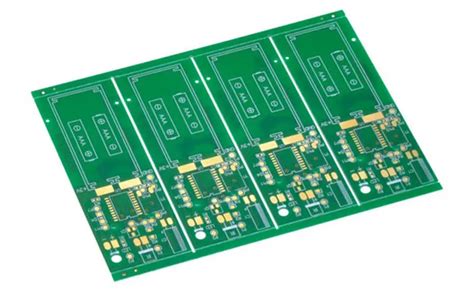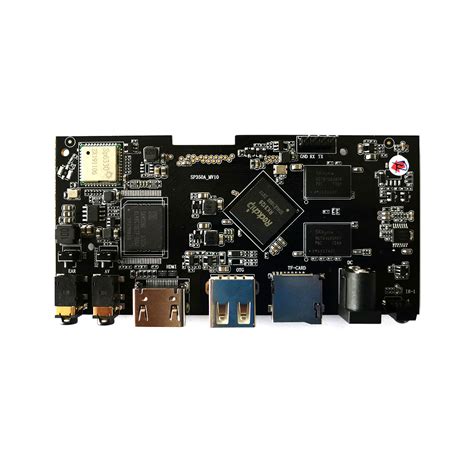Importance of Stencils to PCB Assembly
The surface mount assembly process uses a stencil as a gateway to accurate, repeatable solder paste deposits. A stencil is a sheet or sheet of brass or stainless steel with a circuit pattern cut into it that matches the location pattern of the surface mount devices (SMDs) on the printed circuit board (PCB) where the stencil is to be used. After the stencil is precisely positioned and matched to the PCB, a metal squeegee forces solder paste through the holes of the stencil, forming a deposit on the PCB to hold the SMDs in place. The solder paste deposit melts and holds the SMDs on the PCB as it passes through a reflow oven.
The design of the stencil, especially its composition and thickness, as well as the shape and size of the holes, determines the size, shape, and location of the solder paste deposits, which are critical to ensuring a high-yield assembly process. For example, the thickness of the foil and the size of the hole opening define the volume of paste deposited on the board. Excess solder paste can lead to balling, bridging, and tombstoning. Low solder paste volume can lead to dry solder joints. Both can compromise the electrical functionality of the board.
Optimal Foil Thickness
The type of SMD on the board defines the optimal foil thickness. For example, component packages such as 0603 or 0.020″ pitch SOIC require a fairly thin solder paste stencil, while thicker stencils are better suited for components such as 1206 or 0.050″ pitch SOIC. Although stencil thicknesses for solder paste deposition range from 0.001″ to 0.030″, the typical foil thickness used for most circuit boards ranges from 0.004″ to 0.007″.
Stencil Fabrication Techniques
Currently, the industry uses five techniques to fabricate stencils – laser cutting, electroforming, chemical etching, and hybrid. While hybrid techniques are a combination of chemical etching and laser cutting, chemical etching is very useful for making step stencils and hybrid stencils.
Chemical Etching of Stencils
Chemical milling etches metal mask and flexible metal mask stencils from both sides. Since this etches not only vertically but also laterally, it causes undercuts and makes the opening larger than the desired size. As etching progresses from both sides, the tapering on straight walls results in an hourglass shape, which can cause excess solder to deposit.
Since etching stencil openings does not produce smooth results, the industry uses two methods to smooth the walls. One of these is electropolishing, a micro-etching process, and the other is nickel plating.
While a smooth or polished surface aids in paste release, it can also cause the paste to skip over the surface of the stencil instead of rolling with the squeegee. Stencil manufacturers address this issue by selectively polishing the hole walls instead of the stencil surface. While nickel plating improves stencil smoothness and printing performance, it reduces the opening, which requires adjustments to the artwork.
Stencil Laser Cutting
Laser cutting is a subtractive process where the Gerber data is input into a CNC machine that controls a laser beam. The laser beam starts inside the boundaries of the hole and traverses its perimeter while completely removing metal to form the hole, one hole at a time.
Several parameters define the smoothness of laser cutting. This includes cutting speed, beam spot size, laser power, and beam focusing. Typically, the industry uses a beam spot of about 1.25 mils, which allows very precise apertures to be cut within a wide range of shape and size requirements. However, laser-cut holes also require post-processing treatments, just like chemically etched holes. Laser-cut stencils require electropolishing and nickel plating to smooth the inner walls of the holes. Laser-cut aperture sizes must be properly compensated for as the aperture size decreases in later processes.

Aspects of Using Stencil Printing
There are three different processes involved in stencil printing. The first is the hole filling process, where solder paste fills the holes. The second is the solder paste transfer process, where the solder paste accumulated in the holes is transferred to the PCB surface, and the third is the location of the deposited solder paste. These three processes are critical to achieving the desired result – depositing a precise volume of solder paste, also known as a brick, to the correct location on the PCB.
Filling stencil holes with solder paste requires a metal scraper to press the solder paste into the holes. The orientation of the hole relative to the squeegee blade affects the filling process. For example, a hole with its long axis oriented in the direction of the blade stroke fills better than a hole with its short axis oriented in the direction of the blade stroke. Additionally, since squeegee speed affects hole filling, lower squeegee speeds allow for better hole filling with the long axis parallel to the squeegee stroke.
The edge of the squeegee blade also affects how solder paste fills the stencil holes. It is common practice to print while applying minimal squeegee pressure while maintaining a clean wipe of solder paste across the stencil surface. Increasing squeegee pressure can damage the squeegee and stencil while also causing paste smearing beneath the stencil surface.
On the other hand, lower squeegee pressure may not allow solder paste to be released through small holes, resulting in insufficient solder on the PCB pads. Additionally, solder paste that remains on the side of the squeegee near large holes may be pulled down by gravity, resulting in excess solder deposition. Therefore, minimal pressure is required that will achieve a clean wipe of paste.
The amount of pressure applied also depends on the type of solder paste used. For example, a Teflon/nickel-plated squeegee requires approximately 25-40% more pressure when using lead-free solder paste compared to using tin/lead paste.
Performance Issues of Solder Paste and Stencil
Some performance issues associated with solder paste and stencil are:
The thickness of the stencil foil and the aperture size determine the potential volume of solder paste deposited on the PCB pad
The ability of solder paste to release from the stencil aperture walls
The positional accuracy of the solder brick printed on the PCB pad
During the print cycle, solder paste fills the stencil apertures as the squeegee blade passes through the stencil. During the board/stencil separation cycle, solder paste is released onto the pads on the board. Ideally, all solder paste that fills the apertures during the printing process should be released from the aperture walls and transferred to the pads on the board, forming a complete solder brick. However, this transfer volume depends on the aspect ratio and area ratio of the opening.
For example, in cases where the area of the pad is greater than two-thirds of the area of the inner aperture wall, the paste can achieve better than 80% release. This means that reducing the stencil thickness or increasing the aperture size can provide better solder paste release at the same area ratio.
The ability of solder paste to release from the stencil aperture walls also depends on the finish of the aperture walls. Laser-cut holes that are electropolished and/or plated increase the efficiency of paste transfer. However, solder paste transfer from the stencil to the PCB also depends on the adhesion of the solder paste to the stencil hole walls and the adhesion of the solder paste to the PCB pads. For a good transfer, the latter should be larger, which means that printability depends on the ratio of the stencil wall area to the opening area, ignoring smaller effects such as the draft angle of the walls and their roughness.
The positional and dimensional accuracy of the solder bricks printed on the PCB pads depends on the quality of the transferred CAD data, the technology and methods used to manufacture the stencil, and the temperature of the stencil during use. In addition, the positional accuracy also depends on the alignment method used.

Framed Stencils or Glued Stencils
Framed stencils are the most powerful laser-cut stencils currently available and are designed for high-volume screen printing in production processes. They are permanently mounted in a stencil frame with a mesh border that tightly holds the stencil foil in the stencil tight. Framed stencils with smooth hole walls are recommended for micro BGAs and components with a pitch of 16 mil and below. Framed stencils provide the best positional and dimensional accuracy when used under controlled temperature conditions.
For short-run production or prototype PCB assembly, frameless stencils provide the best solder paste volume control. They are designed to be used with a stencil tensioning system, which is a reusable stencil frame such as the Universal Frame. Since the stencil is not permanently glued into the frame, they are much less expensive than framed stencils and take up much less storage space.
Conclusion
- To achieve good printing results with a stencil, various factors must form the right combination. These include:
- The right paste – correct metal content, viscosity, maximum powder size and minimum flux activity
- The right tools – suitable stencil, printer and scraper
- The right process – good registration and thorough removal.






